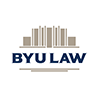Oracle America, Inc. v. Google Inc., Brief of Amici Curiae 42 Intellectual Property Law Professors in Support of Defendant-Cross Appellant Google Inc.
44 Pages Posted: 14 Jun 2017
Date Written: May 30, 2017
Abstract
Oracle’s attack on the jury’s fair use verdict is based on at least four flawed assertions. The first is that Google’s failure to license certain elements of the Java Application Program Interface (API) for its Android platform was evidence of bad faith as a matter of law. This assertion is plainly inconsistent with the Supreme Court’s decision in Campbell v. Acuff-Rose Music, Inc., in which the Court not only expressed skepticism about whether subjective “faith”—good or bad—is relevant in fair use cases, but also explicitly stated that seeking, but not obtaining, a license to use another’s copyrighted material is not evidence of bad faith.
Second, Oracle mistakenly asserts that courts may consider only evidence of subjective bad faith, and not evidence of good faith, in assessing fair use. However, numerous decisions have considered defendants’ good faith in fair use cases. Evidence in the record supported a jury finding that Google acted in good faith. Google witnesses testified about a common industry belief that reimplementing APIs is permissible. Google could reasonably have relied on this belief, as well as on several appellate courts that strictly limited the scope of copyright protection for software interfaces. Google could also have relied on positions taken by the American Committee for Interoperable Systems (ACIS) in support of freedom to reimplement software interfaces. ACIS, of which both Sun Microsystems and Oracle were members, filed numerous briefs in support of the proposition that APIs were not and should not be copyrightable expression. By delivering a verdict in favor of Google, the jury seems to have found Google’s good faith arguments persuasive.
Third, Oracle insists that the jury could not, as a matter of law, have found Google’s purpose in reusing elements of the Java API to be transformative. However, this Court previously ruled that there was a triable issue of fact on transformativeness. Moreover, binding Ninth Circuit precedent has treated similar reuses of software interfaces as transformative. Other fair use decisions lend support to Google’s transformativeness argument. While Oracle and its amici may disagree with the jury’s findings, the verdict was reasonable given the conflicting evidence in the record about transformativeness. Numerous fair use precedents have allowed reuse of copyrighted works, including computer code, to enable technological competition and innovation, including but not limited to, reverse engineering, emulation, interoperability, data-mining, image recognition, plagiarism detection, information location, and more. The jury’s fair use verdict does not undermine Oracle’s derivative work right, given that fair use is a limitation on all § 106 exclusive rights, including the right to prepare derivative works.
Finally, Oracle mischaracterizes the second fair use factor, which is concerned with the nature of the work at issue, not the degree of creativity required to develop an API. Under binding Ninth Circuit precedents, computer programs are deemed utilitarian works. Such works enjoy a thin scope of copyright protection and are subject to a broad scope of fair use—no matter how “creative” they are. The jury’s fair use verdict strongly suggests that the jurors were persuaded that the Java API elements Google used in Android were more functional than expressive.
Keywords: Oracle v. Google appeal, copyright, fair use, good faith, transformative, functionality
Suggested Citation: Suggested Citation

